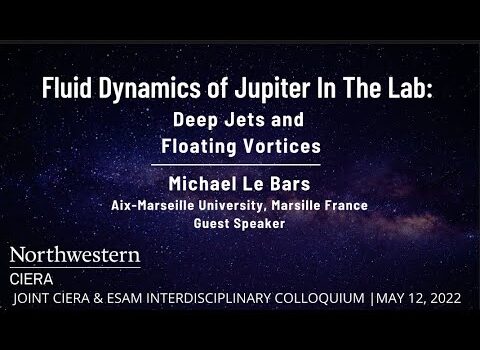
Gallery


CIERA’s 12th Annual Public Lecture, “Strange New Worlds: Is Earth Special?”
CIERA’s 12th Annual Public Lecture, “Strange New Worlds: Is Earth Special?”
This lecture was presented on October 14, 2021 by Dr. Phil Plait, astronomer and best-selling author. Plait discussed the explosion in exoplanet detections since the 1990s (over four thousand so far!). These planets orbit a wide variety of stars, and themselves are all wildly different; huge, small, hot, cold, airless, or with thick atmospheres. The

Modeling Dense Star Clusters: The non-traditional laboratory of an Astrophysicist
Modeling Dense Star Clusters: The non-traditional laboratory of an Astrophysicist
Northwestern Physics and Astronomy student Meagan Morscher presents a talk as part of the Northwestern Ready Set Go (RSG) program. The goals of the program are to increase awareness for the urgent need for excellent research communicators and to coach graduate and post doctoral researchers to improve their own presentation skills. The program focuses on
Northwestern's RSG Program

What Are Other Worlds Like
What Are Other Worlds Like
Northwestern Physics and Astronomy student Sam Hadden presents a talk as part of the Northwestern Ready Set Go (RSG) program. The goals of the program are to increase awareness for the urgent need for excellent research communicators and to coach graduate and post doctoral researchers to improve their own presentation skills. The program focuses on
Northwestern's RSG Program

Seeing Distant Worlds with Better Cameras
Seeing Distant Worlds with Better Cameras
Northwestern Electrical Engineering and Computer Science student Travis Hamilton presents a talk as part of the Northwestern Ready Set Go (RSG) program. The goals of the program are to increase awareness for the urgent need for excellent research communicators and to coach graduate and post doctoral researchers to improve their own presentation skills. The program
Northwestern's RSG Program

Whispers from the stellar graveyard
Whispers from the stellar graveyard
Northwestern Physics and Astronomy student Katie Brevik presents a talk as part of the Northwestern Ready Set Go (RSG) program. The goals of the program are to increase awareness for the urgent need for excellent research communicators and to coach graduate and post doctoral researchers to improve their own presentation skills. The program focuses on
Northwestern's RSG Program

Solar System Symphony
Solar System Symphony
Northwestern Physics and Astronomy student Kyle Kremer presents a talk as part of the Northwestern Ready Set Go (RSG) program. The goals of the program are to increase awareness for the urgent need for excellent research communicators and to coach graduate and post doctoral researchers to improve their own presentation skills. The program focuses on
Northwestern's RSG Program

Baloons Above Antarctica: The Coolest Place to Put a Telescope
Baloons Above Antarctica: The Coolest Place to Put a Telescope
Northwestern Physics and Astronomy student Paul Williams presents a talk as part of the Northwestern Ready Set Go (RSG) program. The goals of the program are to increase awareness for the urgent need for excellent research communicators and to coach graduate and post doctoral researchers to improve their own presentation skills. The program focuses on
Northwestern's RSG Program

Fast Radio Bursts Host Galaxies
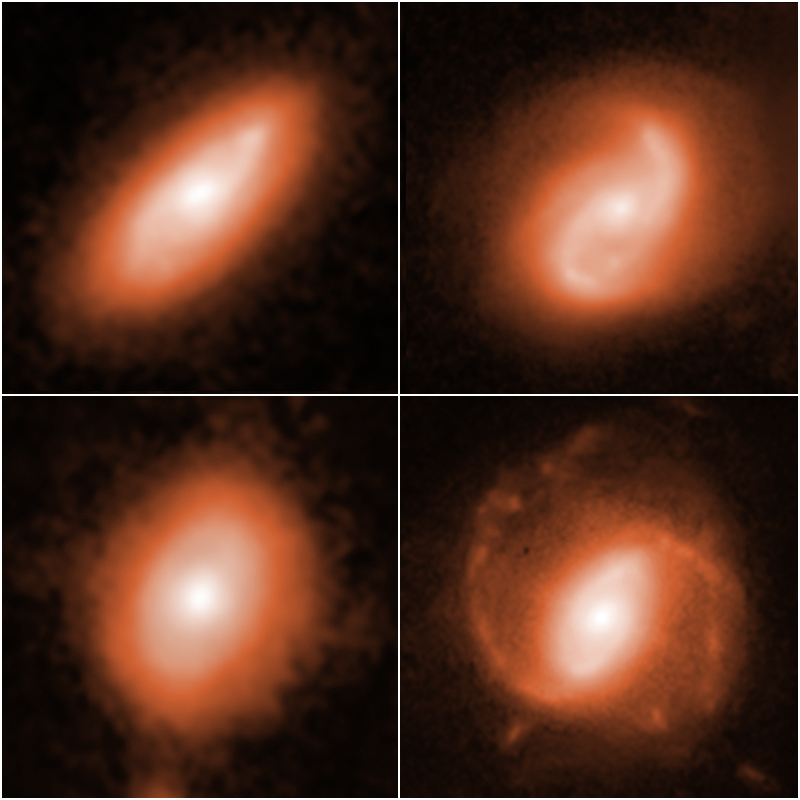
Fast Radio Bursts Host Galaxies
Fast radio bursts host galaxies. The bursts are catalogued as FRB 190714, at top left; FRB 191001, at top right; FRB 180924, at bottom left; and FRB 190608, at bottom right. Learn more.
Science: NASA, ESA, Alexandra Mannings (UC Santa Cruz), Wen-fai Fong (Northwestern). Image processing: Alyssa Pagan (STScI).
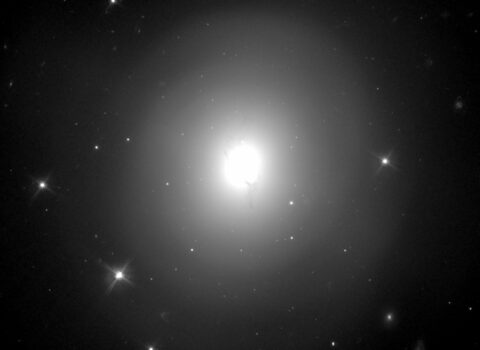
Afterglow from Neutron Star Merger GW170817
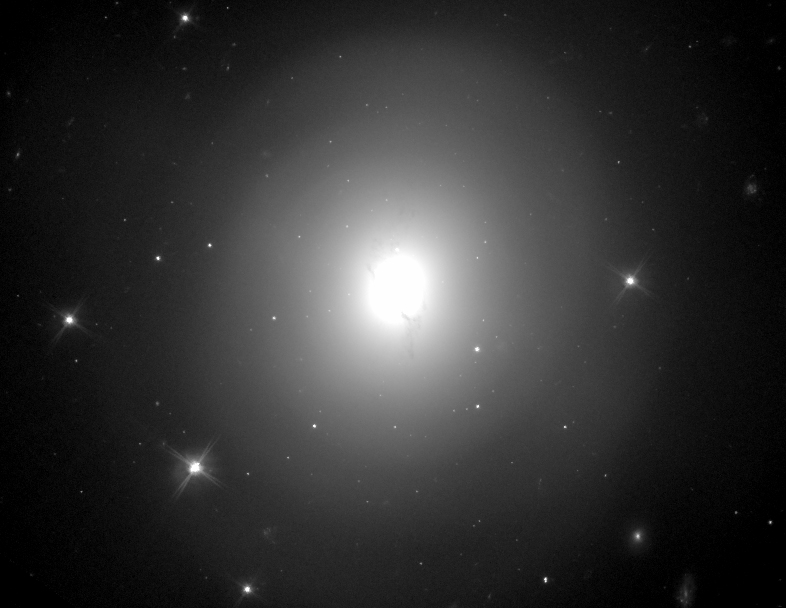
Afterglow from Neutron Star Merger GW170817
Neutron star merger (GW170817) and its afterglow, in relation to the brightness of the nearby galaxy (center). Learn more.
Wen-fai Fong/Northwestern University

STARFORGE Simulation: the “Anvil of Creation”
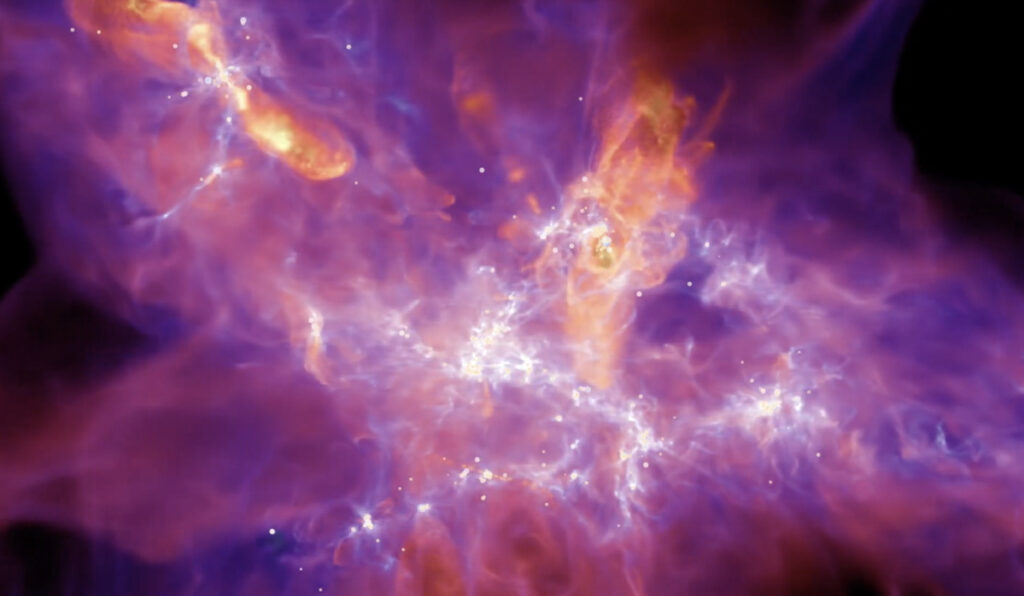
STARFORGE Simulation: the “Anvil of Creation”
Snapshot from the first full STARFORGE simulation. Nicknamed the “Anvil of Creation,” a giant molecular cloud with individual star formation and comprehensive feedback, including protostellar jets, radiation, stellar winds and core-collapse supernovae. Learn more.
Northwestern University/UT Austin

Brainstorm: What stars can tell us about the universe

Brainstorm: What stars can tell us about the universe
Brainstorm is a podcast by the Daily Northwestern which looks into scientific facts and fiction and the reasons why we believe in them. When you look up at the night sky, do you ever wonder where all those stars came from? Host Neya Thanikachalam spoke to CIERA’s Jeff Andrews to find out. The Daily Northwestern
- Science

CBS Women’s History Month 2021
CBS Women’s History Month 2021
Vicky Kalogera is a professor of physics and astronomy at Northwestern University and Director of the CIERA Center – leading research, studying the cosmos and making new discoveries. This interview is a special Women’s History Month 2021 segment for CBS Chicago.
- Outreach

Bad Astra Interviews Maya Fishbach
Bad Astra Interviews Maya Fishbach
Maya Fishbach uses gravitational waves to probe the universe’s most extreme objects — black holes and neutron stars. Her research aims to understand where, when and how these systems of merging compact objects are made. As a member of the LIGO Scientific Collaboration, she analyzes gravitational-wave data to study the population properties of colliding black
- Outreach

SGRB 161104A Environment
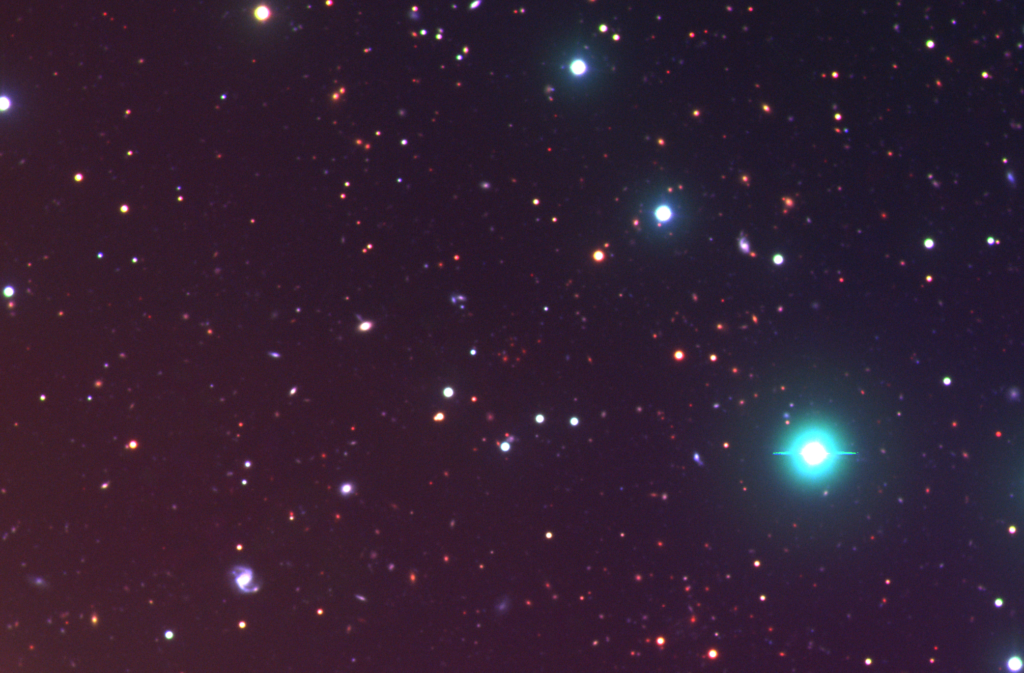
SGRB 161104A Environment
The surrounding environment of SGRB 161104A, which includes a galaxy cluster. Image taken by the Magellan Telescopes. Learn more.
Nugent et al. 2020
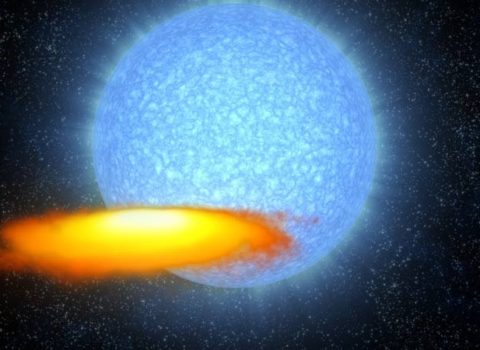
Black Hole Accretion Disk
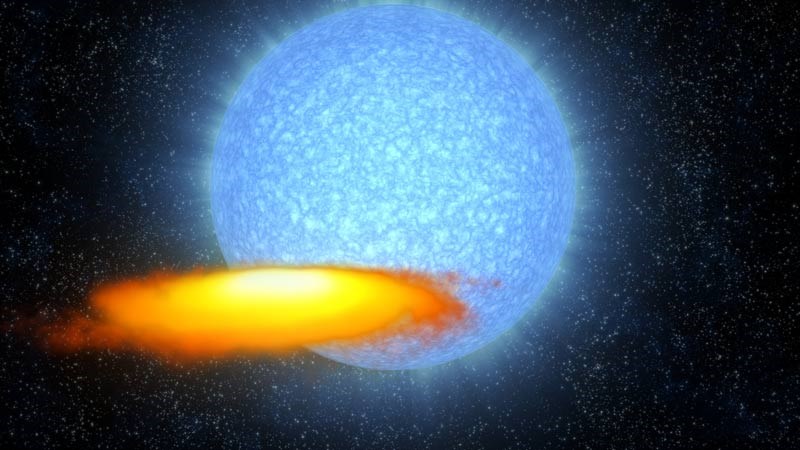
Black Hole Accretion Disk
The massive black hole in M33 X-7 is hidden in the X-ray bright center of the pancake-like accretion disk of matter. The black-hole’s hot (blue) and massive star companion is losing mass in a wind that gets pulled and captured by the black hole. Learn more.
NU Viz and CIERA: Matthew McCrory, Francesca Valsecchi, and Vicky Kalogera
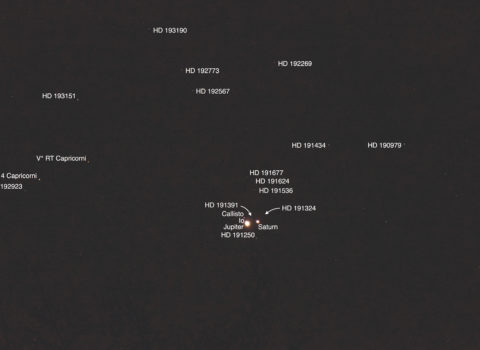
Great Conjunction 2020
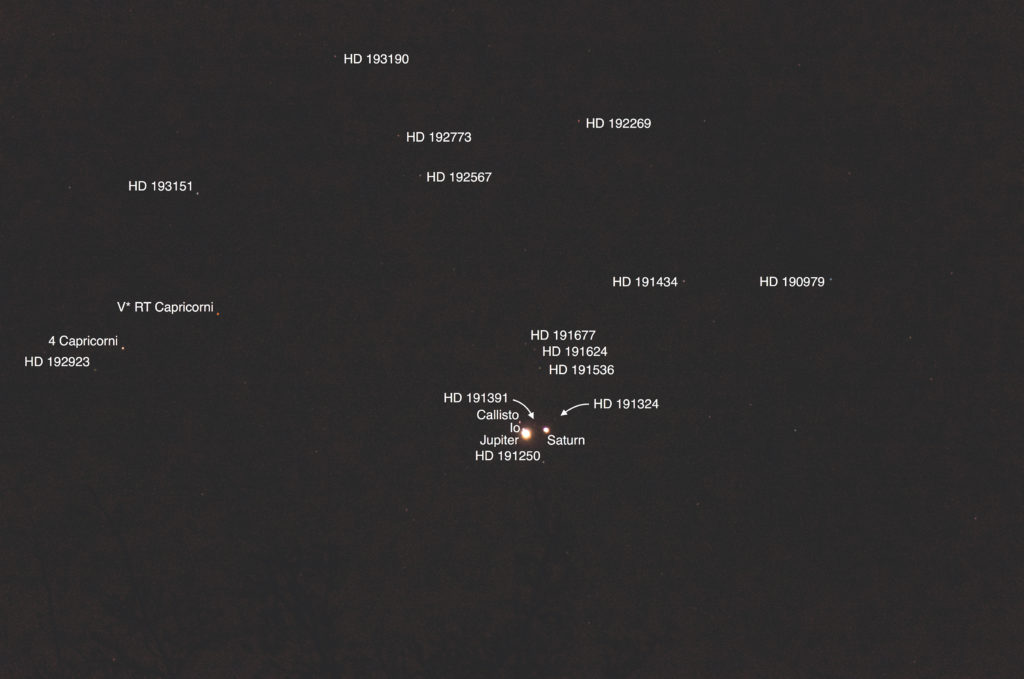
Great Conjunction 2020
PhD student Newlin Weatherford, who holds the Riedel Family Graduate Fellowship at CIERA, captured the Great Conjunction (“Christmas Star”) of Jupiter and Saturn on December 21, 2020 at 6:20 pm PT from Novato, California. Using his Panasonic DZ1000, Newlin wasn’t able to resolve Saturn’s rings, but we can see Callisto and Io and many faint
Newlin Weatherford, Northwestern CIERA

Kilonova Explosions and Magnetars
Kilonova Explosions and Magnetars
Professor Wen-fai Fong is interviewed for The Cosmic Companion and talks about her work studying kilonova explosions and collisions of neutron stars.
- Science

